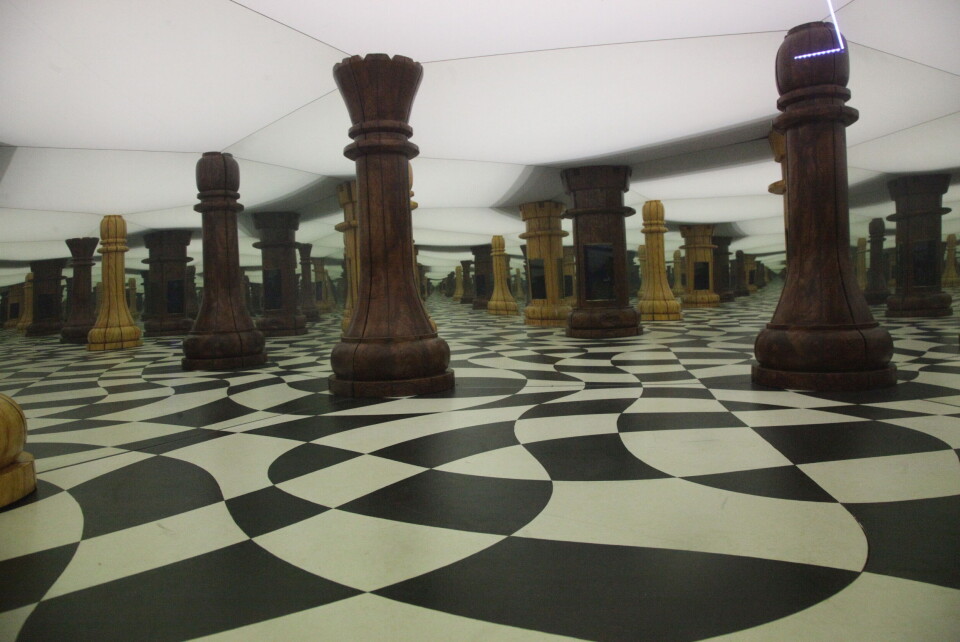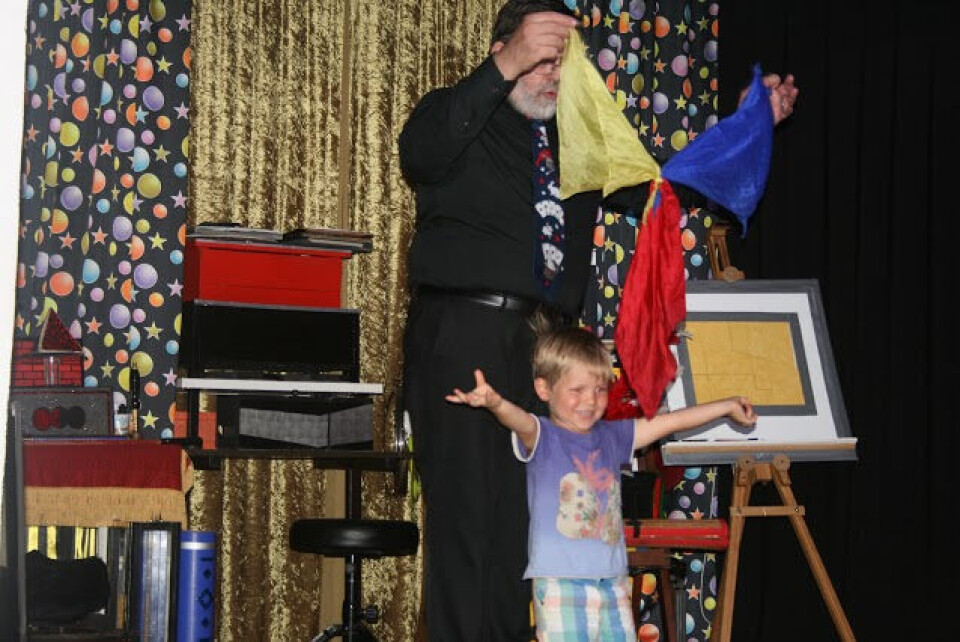-
Photos: 94 chateaux open their doors to visitors in Dordogne
The fifth Chateaux en Fête festival offers a chance to look around many impressive properties that are usually private
-
Martel: the medieval French town home to a 'truffle' train and lavender festival
The small town in the Lot offered refuge to an English throne heir until his death
-
Brittany lighthouse lens removal leads to public outcry
A petition gained over 20,000 signatures, highlighting the ongoing battle over the buildings' heritage in France
Magical tour: Discover France’s most spectacular illusion museums
The French have a long history of loving magic and even sent one of their most iconic performers to Algeria in the 19th century as a propaganda weapon

Magic is very popular in France – conjuring, mentalism, illusions, prestidigitation, fakirism – so much so that in normal times it is not too hard to find a cabaret offering magic shows and dinner (Just search online for cabaret magie).
There are also some wonderful musées de magie around France, as well as shops selling conjuring equipment and books about magic, and schools where you can learn the tricks of the trade.
What could be more fun than attempting to follow in the footsteps of France’s famous magicians?
Possibly the most famous was born in Blois in 1805.
Jean-Eugène Robert-Houdin started out as a watchmaker, but learned a few magic tricks from a book he was sent in error.
Gradually he became so fascinated that he started taking lessons from a local magician and when the family moved to Paris he continued his side-hustle of entertaining people at parties with his magic tricks. He also began building amazing mechanical automatons that could do things like write and draw.
He enjoyed creating complex gadgets to perform illusions, and by 1845 was accomplished enough to open his very own 200-seat theatre in which to perform his shows.
He was the first magician to wear a top hat and tails, and the first to perform magic in a theatre rather than in a market, travelling fair or street corner.
It was incredibly successful; his wardrobe and many of his illusions were adopted by other magicians and became standards across the world.
There is a YouTube video of him performing his famous suspension illusion.
Robert-Houdin retired in 1853, but came out of retirement three years later at the request of Napoleon III, who feared an uprising in Algeria, where magicians were stirring up trouble.
His mission was to go to Algeria and demonstrate that French magic was stronger than theirs. It sounds incredible now, but the trip is well-documented.
Off Robert-Houdin went, and performed a series of illusions including catching a speeding bullet in his teeth, and being able to magically ‘sap a man’s strength’.
A volunteer would be asked to lift a heavy iron box, which he would do. He would then have his strength ‘sapped’ by the magician, and be unable to lift the box a second time... because an electromagnet had been secretly switched on making it impossible to lift the box.
Back in Blois, he wrote his memoirs Confidences d’un Prestidigitateur and died in nearby Saint-Gervais-la-Forêt in 1871, at the age of 65.
Harry Houdini chose his stage name in homage to Robert-Houdin. There are streets named after him in Bourges, Caen, Saint-Etienne, Paris and Blois, and his house in Blois is now open to the public. The ‘Maison de la Magie Robert-Houdin’ is a museum as well as a performance venue for magic.

It is worth visiting, even just to stand outside and watch the resident dragon’s six heads appearing out of the windows every hour with its eyes flashing red, snapping at the pedestrians below. The museum is impossible to miss, right opposite the Château Royal de Blois – the city’s other main tourist attraction.
The château is beautifully maintained, furnished, decorated and hung with paintings. It is also well-curated, giving lots of information about the architecture and the royal families who lived in it over the centuries.
The ticket price includes the loan of tablets called Histopads, which visitors can use at certain vantage points to see how the château would have looked at various times in history.
The other photogenic attraction in Blois is the Escalier Denis Papin, a monumental staircase linking the higher part of the old town with the banks of the Loire.
Every year since 2013, the risers have been cunningly painted so that the entire construction looks like a poster. One year it was Mickey Mouse, another it was the Mona Lisa. Climbing the steps is surreal but the views from the top are also magic.
In Paris, the Musée de la Magie in the fourth arrondissement is a long-established fixture, offering a small museum of magic and automatons along with short magic shows, a shop selling books and DVDs about magic, and a school offering classes to aspiring magicians.
But there are some great addresses outside the capital, too.
On the border with Luxembourg and Germany, the village of Beyren-lès-Sierck has a modest claim to fame in the shape of the Musée des Illusions created by magician Gilles Petermann. It is laid out in four rooms, includes a 50-seat theatre.

The museum explains how some of the most famous illusions are created, and includes some magical science as well.
“I’ve always loved magic, and started learning tricks when I was still at school. I used to do them for people in the retirement home next door,” said Mr Petermann. The museum is in what used to be the stables of his farmhouse.
“All magicians want their own theatre, so the minute I saw those stables, I started planning!”
An electro-technician working in telephony, he has always also been a part-time magician, doing shows for birthdays and anniversaries.
“My other passion is physics and chemistry because they are so amusing.
“So I have set up demonstrations and experiments here, showing how static electricity makes your hair stand up, for example. There are so many surprising things in science.”
He has also added a crêperie where he make ingenious cakes out of pancakes layered with fruit, Nutella, jam and other sweet things. “I did a two-week course in Brittany to learn how to make pancakes,” he said. “That way children can come, see the museum, enjoy the magic show and then have a birthday tea.”
His main passion is magic but he loves handing on his enthusiasm for maths, physics and chemistry. “I had a teacher in primary who showed us little experiments on his desk so-called ‘water’ becoming ‘milk’ and so forth, and I loved it. I love everything mysterious and fun.”
He has a promising student who he said works hard at the craft. “Magic is a lot of work and training, you have to rehearse it over and over. It’s a mix of psychology, dexterity, and creativity. Presentation is everything. You have to create a world, a story, a character.”
The museum receives approaching 3,000 visitors per year and he is hoping that when it reopens with all the additions he has made during lockdown, to attract plenty more. “I would like to enlarge it a bit, add some more space for more exhibits, because lack of space is always the main problem.
And his favourite magic tricks? “Mentalism. I love things based on memory and psychology. People are always so amazed.”
The Musée du Cirque et de l’Illusion in Dampierre-en-Burly, south-east of Orléans, is another fascinating place to visit, especially if you thought the tigers in the fabulous Deux Frères were well-trained (if you have not seen it, you have a treat in store. It is a tale of filial and fraternal loyalty starring two furry felines culminating in a heart-warming happy ending. Entitled Two Brothers in English, it is still available at online DVD stores.)
If you have already seen it you will know that the tigers in the film are brilliant actors – except that in some scenes they weren’t actually live tigers at all, the roles were played by animatronic models – and you can see them in this museum, along with a goodly selection of other circus and magic memorabilia.
Of course, in the world of magic and illusion, very little is what is seems, and many magic tricks rely on animatronics. You can find out more at La Magie des Automates in Lans-en-Vercors, just south of Grenoble.
The enchanting collection of around 350 automatons captivates children, especially as they can use a ‘magic wand’ to make them work. The earliest on show date back to the 1930s and there is a display showing their inner workings.
The museum was created in 1982 by Alain Bardo, a window-dresser specialising in animated scenes, in order to allow more people to enjoy his work.

He constructed many of the models himself and his animated Village Vercors, which began life as the village of the bears, is particularly popular.
It consists of around 20 animated chalets set out in the museum’s garden, where you can also eat a picnic, if you have brought one with you.
Today, the museum is directed by Antoine Bardo, Alain’s son, who also constructs new scenes and automatons from plaster, resin and fabric in the museum’s large workshop.
The online shop sells some amazing animated wooden models to construct at home – of all sorts of things from tractors to film projectors, clocks to people, planes, trains, dinosaurs, animals, and carousels. Some are mechanical, others solar powered. They are brilliant ways to introduce children to the basic mechanics of cogs, drive-shafts, levers, and so on.
If you are itching to produce a dove from your breast pocket, however, or even just to amaze your friends with a slick card trick or two, you can find several magic shops in Paris, including Le Bazar de la Magie in the 12th arrondissement, which also sells items for ventriloquists; Mayette Magie Moderne in the fifth; and Magic Dream in the 15th.
Just outside Marseille in Sanary-sur-Mer there is Le Petit Magicien, in Lyon there is Agility-Magicirk.
They all have online boutiques, and you could try online boutiques including magicaplanet.com and artfisik.com
























